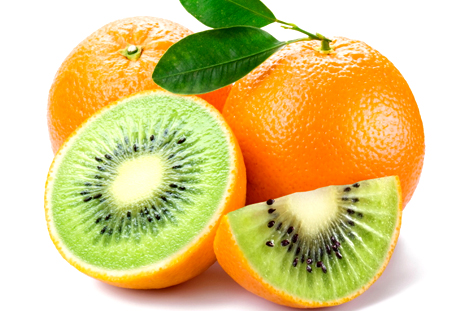Sorry for the lack of post yesterday, it has been a busy
week already and it is only Tuesday! I really want to talk about GMO’s,
genetically modified organisms, because it is a term that is discussed every
single day and some may have heard about GMO’s but maybe you’re unsure what the
term really means or what you should watch out for.
To start, genetically modified organisms are organisms (or
micro-organisms) such as bacteria, yeast, insects, plants, fish and mammals
whose genetic makeup has been altered using engineering techniques. The
techniques used include inserting, deleting, or mutating the genes of the organism
in order to alter or change the species entirely. For example, DNA from one organism can be extracted
and merged with the DNA of a different organism to create an entirely new
species. This is widely performed in medical research and experimentation,
production of pharmaceutical drugs, and agricultural production.
Agricultural products are categorized into two groups: (A)
those that are high-risk of being GMO because they are in commercial
production and (B) organisms that have a supervised risk because they
may have come in contact or contaminated with genetically modified relatives. High-risk
crops include: corn, papaya, soy, sugar beets, zucchini, summer squash, canola,
and alfalfa. Supervised or monitored-risk crops include: flax, wheat, rice,
chard, acorn squash, turnip, bok choy, and table beets. There are several
ingredients that are derived from GMO risk crops including but not limited to: Aspartame,
Ascorbic Acid, Sodium Ascorbate, Vitamin C, Citric Acid, Sodium Citrate,
Ethanol, Flavorings (“natural” and “artificial”), High-Fructose Corn Syrup,
Hydrolyzed Vegetable Protein, Lactic Acid, Maltodextrins, Molasses, Monosodium
Glutamate, Sucrose, Textured Vegetable Protein (TVP), Xanthan Gum. So what does
this mean?
Avoid GMO foods! There are several ways to keep your diet
GMO free including: buying organic foods because the USDA National Organic
Standards prohibit GMO’s and plus organic foods have little to no pesticides
and herbicides. Look for the non-GMO seal, which is tough to find
because there is no requirement to label GMO foods. Most companies actually
will not tell people what is really in their foods! Say no to “at-risk”
ingredients and additives such as soybeans, canola, cottonseed, corn and
sugar from sugar beets, which are the highest risk GMO’s.
When I first started researching GMO’s, I got really
overwhelmed! But … Do not fear I am here to help you. There is a lot of
information out there and I will continue adding to this post to keep you
informed and provide you with ways to avoid GMOs.
My parents just spent some time in Hawaii and they brought
back a ton of macadamia nuts! They are sooo sooo good but definitely need to
keep them in check when eating them! Lol So this recipe is GMO free and Hawaii
inspired J
Take care of you!
J



No comments:
Post a Comment